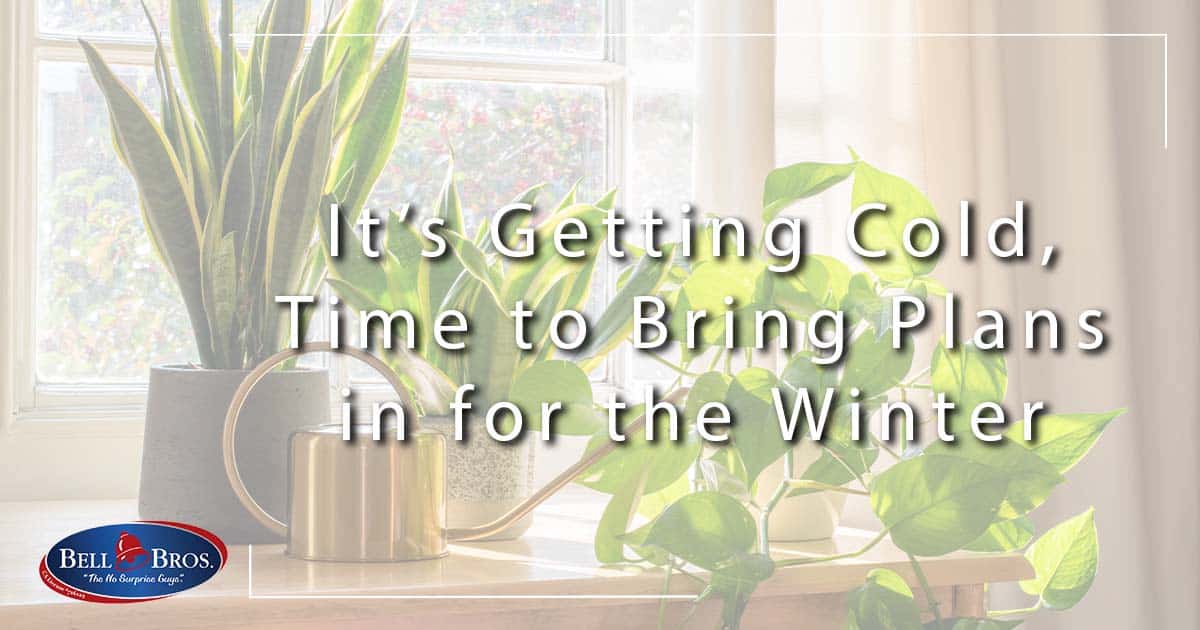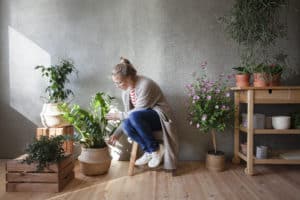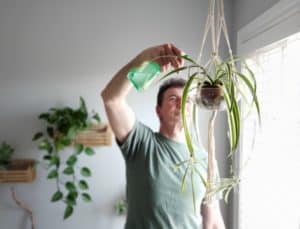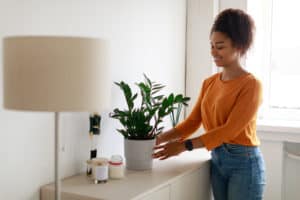
The nights are getting cooler only means winter is here. Temperatures are starting to drop, and you may be wondering what to do with your plants for winter. If you’re feeling the cold, some of your plants will be too. Check out these tips and tricks to help successfully bring your plants in for the winter.
When to Bring Plants in for the Winter
The best time to bring your plants indoors is when nighttime temperatures reach about 50 degrees Fahrenheit. However, you can also bring them inside if there is a forecast of cold temperatures and frost. You don’t want them suffering frost damage as that can be tricky for them to recover from (if at all!).

Where to Place Your Plants
When you bring your plants indoors for the winter, it is essential to get them settled into their new environment as quickly and safely as possible. The best way to do this is by slowly acclimating them to the indoor environment.

If you have no open windows in your home, you can use lamps instead to give off a soft, indirect light instead of direct sunlight. Grow lamps are ideal for helping your plants thrive indoors.
Debug and Clean Plants
There are several ways to get rid of bugs on your plants. You can use chemical treatments, but these can be toxic to people and pets.
Chemical sprays are effective against most types of pests, but they’re also potentially harmful to humans and pets if not used properly. Make sure to read all instructions carefully before applying any pesticide spray so that you know how much to apply.
Cut Back on Watering
When you bring outdoor plants inside for the winter, you need to cut back on watering them. But how do you know when to water?

Here are a few tips:
- Water sparingly. Plants slow down their growth a little in the winter. So, they need less water than they would in the summer months. You can tell if it’s time to water if the soil feels dry an inch deep or so down into the potting soil.
- Don’t overwater! The biggest thing that kills indoor plants is too much water or not enough air circulation around them. Watering too often or using a saucer that doesn’t drain properly can cause root rot and other problems with your plants’ health.
- Remember to water the soil and not the leaves. It’s best to alternate between watering from the top and watering from the bottom.
The bottom line is – don’t overwater.
Make Sure There’s Light and Humidity
Indoor plants need sunlight to grow, but too much can be harmful. Direct sunlight will burn leaves and scorch stems. To provide your plants with the correct amount of light, place them near a window with at least 6 hours of indirect sunlight per day.

Humidity is essential to a plant’s growth, but it can be hard to get the right amount. Most plants need a humidity of between 40% to 60% to thrive. However, if you have a dry home or office, there are things you can do to help your plants stay healthy and green.
Keep your home’s temperature and humidity comfortable this winter by booking a furnace tune-up with Bell Bros.

